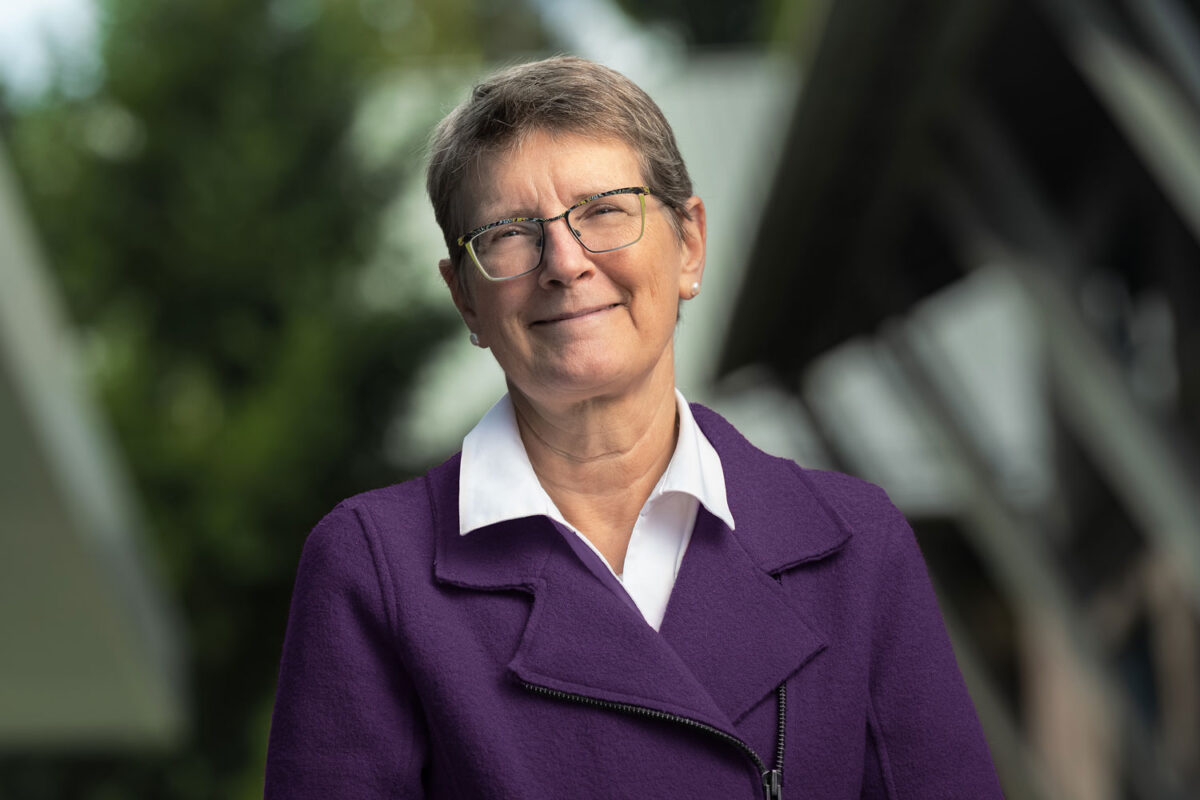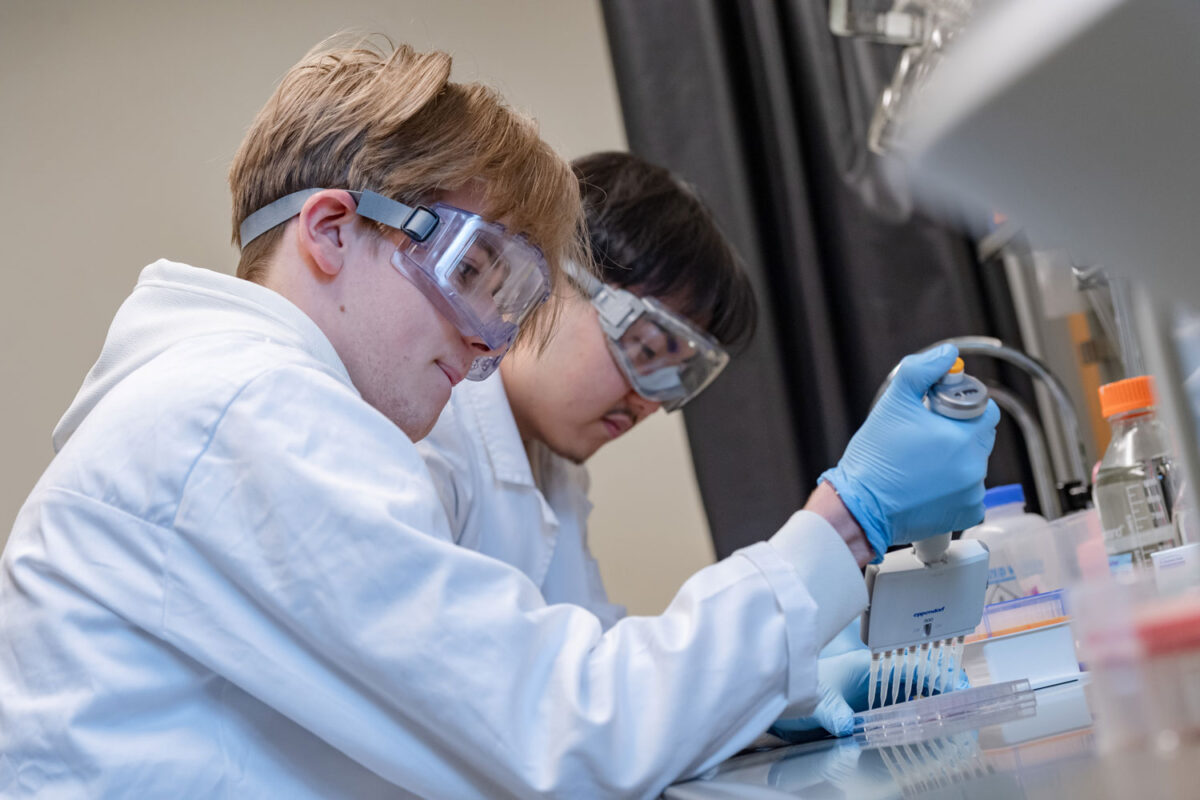By Douglas Esser
The problem with lowering a camera tripod into a river to take bridge foundation images is the water. Current moves or tips the tripod. What bridge inspectors could really use is a stable platform for sonar scanners that can be deployed from a boat and leveraged off the bridge structure. Who can design such a platform? UW Bothell mechanical engineering students can.
Three students in a marine engineering course last spring designed a platform in a community-based learning and research project with Teledyne BlueView, a Bothell sonar products company owned by Teledyne Technologies, a global industrial company.
How could a multinational use a UW Bothell student project?
“There tend to be a lot of big problems that suck up an engineering department’s attention. A lot of small interesting problems tend to not get the attention they need,” says Jay Seawall, who founded BlueView in 2004 and became vice president of technology for Teledyne’s marine innovation group.
Seawall had previously worked with Professor Pierre Mourad and renewed the connection with Shima Abadi, assistant professor in the engineering and mathematics division of the School of Science, Technology, Engineering & Mathematics. Abadi is developing a marine engineering minor at UW Bothell that could start with the 2017-18 school year.
It turns out a deployment system for scanning sonar was a good project for the students, too. Not too big, but a challenge to build a platform that met all the conditions of being deployed by one person on a boat, in the current, touching the bridge (but not drilling into it). Another big factor was cost, Seawall says.
And students had to consider materials that could withstand corrosion and the harsh environment.
The students, Kara Nuno (’16), Case Isaac (’17) and Youssef El-Khamri (’16), worked with professional engineers.
They “really enjoyed the experience and thought the students did a great job of flushing out the problem and brainstorming with them,” Seawall says. “There was in interest in continuing to mature the idea.”
The idea is on hold because Teledyne is consolidating BlueView with a sonar products office in Denmark. Seawall is working from Seattle where he holds an affiliate research position at the University’s Applied Physics Laboratory.
“I felt the big benefit for Teledyne was being able to give back to the community and help. It’s a desire of most professionals to pass some of their knowledge back as mentors and then to help develop that relationship,” says Seawall who remains in touch with Mourad and Abadi for projects and potential internships. “The relationship between Teledyne and the University is stronger because of it.”


The students are stronger, too.
“Having a program that exposes and teaches and even gets hands-on experience adds significantly to the value of someone stepping into the industry,” Seawall says."
The ocean engineering minor would be the first minor offered in the mechanical engineering program, which is only two years old itself. Abadi says the applied science focus will help the marine industry find qualified engineers.
“You can hire an oceanographer. They know a lot about oceans, the circulation and everything but they don’t know technology, the devices, the engineering part of it,” she says.
Abadi recently had an email from an incoming student who planned to join the Navy and wanted to learn about underwater acoustics.
“There are demands. There are people interested,” she says. “It’s in the news: marine mammals, ocean energy, Navy activities. You hear a lot.”
To help advance her program, Abadi is looking forward to construction of a larger water tank in a Discovery Hall lab where students can experiment with underwater transducers and hydrophones for signaling. Students also are joining a UW chapter of the Marine Technology Society to build opportunities for networking and internships.
Another student was introduced to ocean engineering through a separate community-based learning project in Abadi’s class. Kaleb Dempsey’s group worked with the UW’s School of Oceanography to design a deployable sensor platform for an acoustic Doppler current profiler that could be used with the UW’s ERIS observatory, a student designed and built underwater learning facility.
“Our design had to be able to withstand the incredibly corrosive environment of the ocean, be easily deployed/retrieved, avoid sinking into the seafloor and be able to potentially accommodate other sensors through different mounting points,” said Dempsey.
The class widened Dempsey’s engineering goals beyond the aerospace and biomedical fields he has considered after he graduates next June with a degree in mechanical engineering.
“When I approach graduation, part of my job searching will include looking for jobs related to ocean engineering,” Dempsey says.



